Those who booed the production team last night - there was nothing but generous cheering for singers, conductor and orchestra - might reflect that this was at least regietheater, that singular brand of not-all-bad director's opera in Germany, with discipline and purpose close enough to its subject. There were some cliches and the occasional question-mark - who's the trembling, plastic-wrapped youth in underpants and why the nearby oil drum? - but you had to hand it to Barbora Horáková for making everything connect, in however stylised a way.
Think back to Daniel Kramer's party nightmare in La traviata and you'd have to admit that this was strictly organised mess, however cheap-looking at first, which always let the singers be heard, never getting too much in the way of the crucial one-to-ones. Verdi's Luisa Miller may not be anything like its source, Schiller's Kabale und Liebe (Intrigue and Love), but there's just enough about class and sexism to connect with, and the score is often remarkable. It needs authentic Italian style from the conducting and three strong singers; here it got six.
You knew you were in safe Verdian hands from the way that Alexander Joel conducted the opening phrases of the Overture, symphonically developed in a way that shows the master Verdi of the middle years – Rigoletto and La traviata were just around the corner – and there was nothing jarring about Horáková’s introduction of two children who, it would soon be clarified, were younger versions of commoner Luisa and her nobleman-suitor Rodolfo, painting “amor” on wings of Andrew Lieberman‘s soon-to-be besmirched white, bright set (confusingly, though, this couldn’t have happened since in the opera, not in the play, Rodolfo woos in disguise – these lovers were never kids together. Take it as symbolic of the young spirits within). 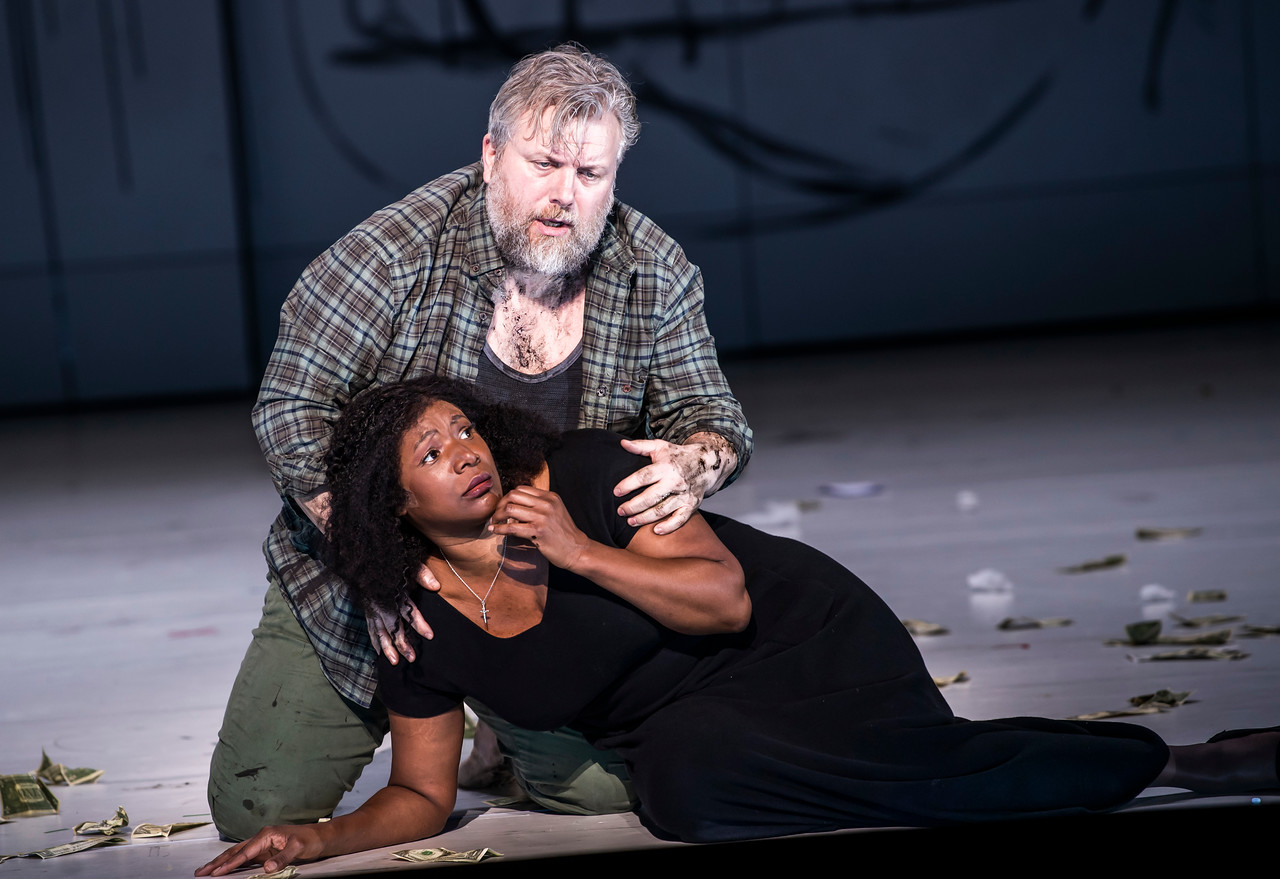 The score’s move from pastoral to melodrama and finally to poetic pathos is embodied in its heroine: a vocal problem, since she must embrace the light and girlish at the start of the first act, the dramatic when faced with evil machinations in the second, and an other-worldly resolution in the third. Immensely sympathetic Elizabeth Llewellyn pulled off the early coloratura, just about held the lyric voice together when going for the big guns in the Act Two aria and came fully into her own for the masterly final duets.
The score’s move from pastoral to melodrama and finally to poetic pathos is embodied in its heroine: a vocal problem, since she must embrace the light and girlish at the start of the first act, the dramatic when faced with evil machinations in the second, and an other-worldly resolution in the third. Immensely sympathetic Elizabeth Llewellyn pulled off the early coloratura, just about held the lyric voice together when going for the big guns in the Act Two aria and came fully into her own for the masterly final duets.
The one with father Miller, newly released from the dastardly Count’s prison because of his daughter’s sacrifice, not only shows Verdi as the master of original orchestral colours; it also embraces a crucial change of heart, as Luisa gives up her idea of suicide to honour her poor old dad. Llewellyn and Icelandic baritone Olafur Sigurdarson – stalwart, plausible, though sounding a bit as if he might have forced the singing, unnecessary in the Coli - made this moving to tears at the calmest moment, when Luisa tells her father to get some rest before they go off a-roving in the morning (Sigurdarson and Llewellyn pictured above).
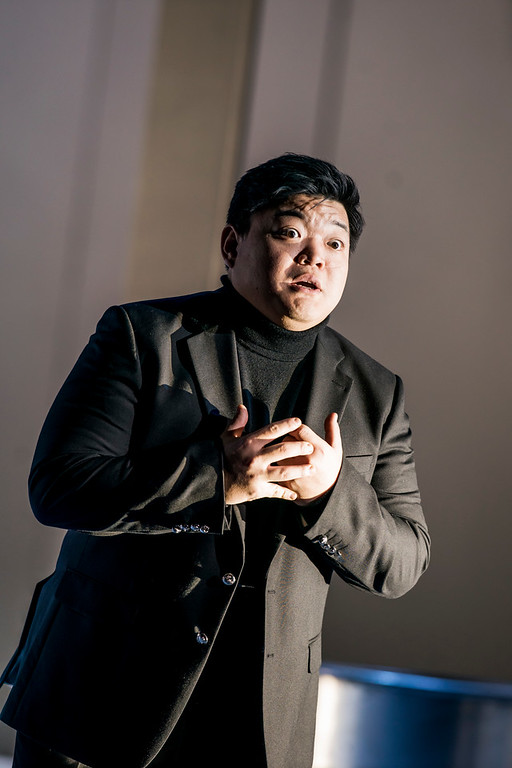 Then comes the crunch: the girl poisoned by her lover when he still believes her unfaithful. The top purely vocal thrill of the evening came from former Royal Opera Jette Parker Young Artist David Junghoon Kim (pictured left), the bright Verdi tenor to the life, nuanced, subtle in piano, searingly intense at full pelt, making an absolute dream of the opera’s best-known aria, best known in the Italian as “Quando le sere al placido”. Kim may not be the greatest actor – few Italianate tenors of this sort are – but he was game enough to wrestle with the movement group, representing the malign forces of Wurm’s machinations, in his cabaletta.
Then comes the crunch: the girl poisoned by her lover when he still believes her unfaithful. The top purely vocal thrill of the evening came from former Royal Opera Jette Parker Young Artist David Junghoon Kim (pictured left), the bright Verdi tenor to the life, nuanced, subtle in piano, searingly intense at full pelt, making an absolute dream of the opera’s best-known aria, best known in the Italian as “Quando le sere al placido”. Kim may not be the greatest actor – few Italianate tenors of this sort are – but he was game enough to wrestle with the movement group, representing the malign forces of Wurm’s machinations, in his cabaletta.
In the original cast list, father, daughter and lover are the “primi”, the leads, while three more characters appear as “comprimarii”, supporting roles. There was nothing secondary about any of the singers in question. Dependable James Creswell as Rodolfo’s criminal father, Count Walter, stayed firm in the face of some of Horáková’s more, shall we say, challenging ideas (was the boy in underpants an adolescent Rodolfo? I left my programme in the theatre, so I never got to read the director’s notes, but one shouldn’t have to).
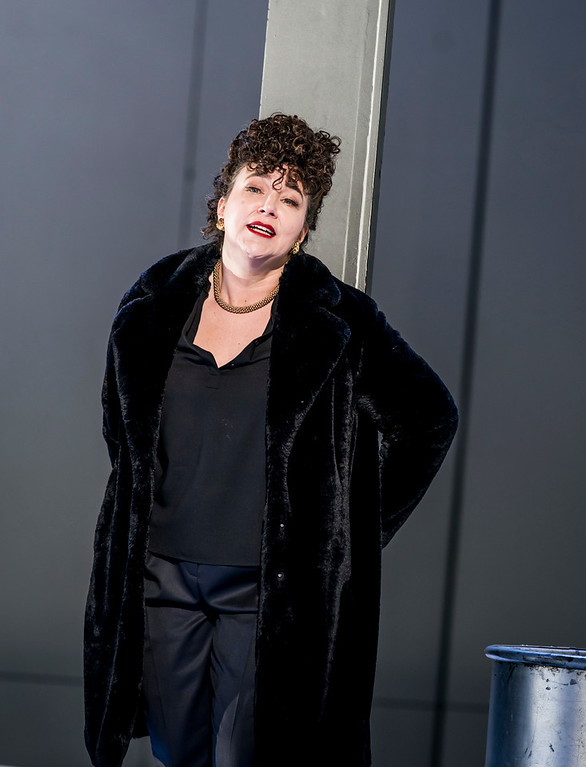 Soloman Howard’s Wurm offered bass-hunk appeal, a big presence both physically and vocally, while the biggest luxury of all was to have great British mezzo Christine Rice as Luisa’s love-rival, the Duchess Federica of Oatheim (pictured right). She had been down to sing Eboli in Don Carlo at the Royal Opera, but had to pull out due to illness; this very limited role gave intimations of what we might get there – ENO could even pull it off with this current dream team.
Soloman Howard’s Wurm offered bass-hunk appeal, a big presence both physically and vocally, while the biggest luxury of all was to have great British mezzo Christine Rice as Luisa’s love-rival, the Duchess Federica of Oatheim (pictured right). She had been down to sing Eboli in Don Carlo at the Royal Opera, but had to pull out due to illness; this very limited role gave intimations of what we might get there – ENO could even pull it off with this current dream team.
With another sympathetic girl to back up Luisa in the form of Nadine Benjamin’s friend Laura, the opening choral scenes transcended borderline silliness in the Day-of-the-Dead costuming (better marshalled, at least, than in Kramer’s Birwistle Mask of Orpheus). The splendid chorus, inevitably dogged by a hint of G&S in the painfully old-fashioned English translation, provided a big thrill in the Act One ensemble; with Llewellyn crowning the line, it was a bit like the ENO Powerhouse days when Davids Alden and Fielding challenged us with their abstractions and a vocal team impressed. Hopefully there’ll be more from this excellent line-up; Verdi has come back to the Coliseum trailing clouds of glory.

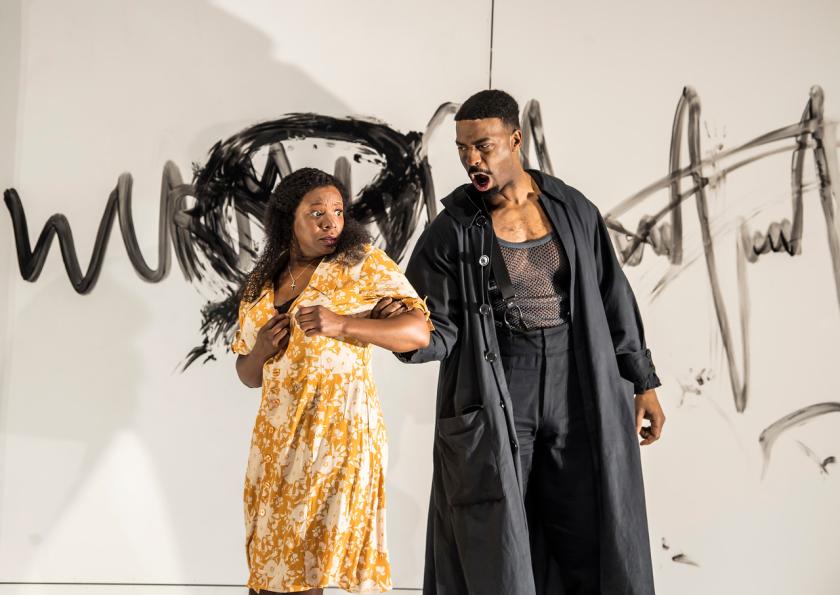

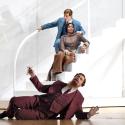
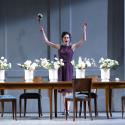










Add comment